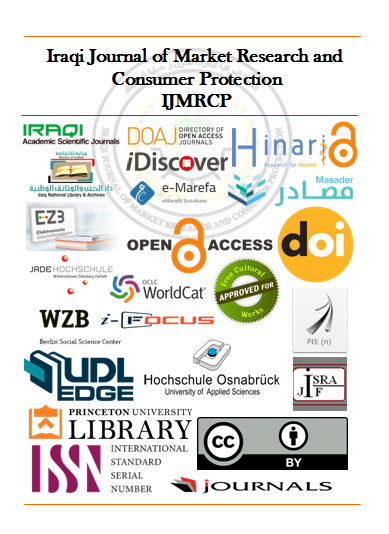PRODUCTION OF NANO-BETAGLUCANS FROM BAKING YEAST Saccharomyces cerevisiae AND STUDYING SOME OF ITS PROPERTIES AND ITS APPLICATION IN THE MANUFACTURE OF SOFT CHEESE
PRODUCTION OF NANO-BETAGLUCANS FROM BAKING YEAST Saccharomyces cerevisiae AND STUDYING SOME OF ITS PROPERTIES AND ITS APPLICATION IN THE MANUFACTURE OF SOFT CHEESE
Keywords:
Nano betaglucan, Soft cheese, Saccharomyces cerevisiaeAbstract
The inhibitory activity of the extracted and nano-betaglucan compound was estimated against pathogenic bacteria, as the average diameter of the inhibition zone at a concentration of 200 mg/mL gave the highest inhibitory activity for all types of isolates with significant differences at a probability level (P≤0.05), of which we singled out of Gram-positive bacteria when converting it into a nanocomposite. The results showed that there was no growth inhibition zone for lactic acid bacteria. The cytotoxicity of betaglucan nanocomposite was estimated, as it was observed in the Microculture Tetrazolium Test (MTT) that there were significant differences between the viability of cells in the Human dermal Fibroblast cell line (HdFn) (control treatment) and the concentrations of betaglucan nanocomposite at a probability level of 0.05, as the number of cells decreased. The presence of anticancer activities of the nanocomposite betaglucan produced in this study in the human breast cancer cell line Michigan Canner Foundation-7 (MCF-7), whose concentrations increase, the number of cells decreases, starting from (0) to (200) µg/mL. The nanocomposite betaglucan was added to the curd of soft cheese in proportions of 0.1, 0.25 and 0.5%. All these treatments were subjected to chemical, microbial and sensory tests. The results were: A significant decrease in the percentage of moisture compared to the comparison treatment, the chemical indicators of soft cheese were monitored, which included (fat, protein, acidity and pH). Soft cheese models with added nano-betaglucan manufactured in general were characterized by a decrease in the number of bacteria, yeasts and molds contaminating the cheese compared to the comparison treatment during the storage period. The aforementioned results were generally reflected in the sensory evaluation results, as the highest scores were given for taste, flavor, texture, color, and appearance. on soft cheese samples (treatments T2, T3, and T4) respectively, compared to the control treatment (T1).
Published
Issue
Section
License
Copyright (c) 2025 Iraqi Journal of Market Research and Consumer Protection

This work is licensed under a Creative Commons Attribution 4.0 International License.





